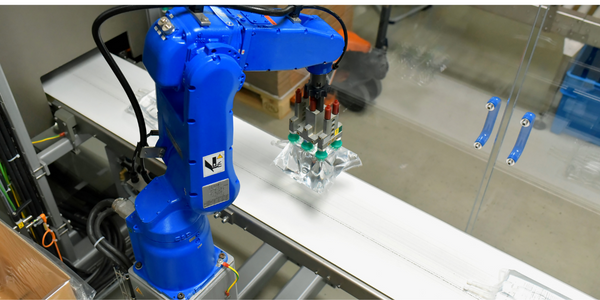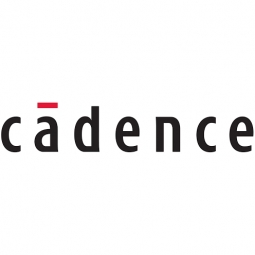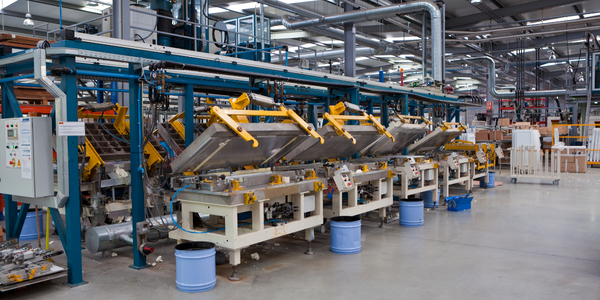技术
- 网络与连接 - 以太网
- 处理器与边缘智能 - 片上系统
适用功能
- 产品研发
- 质量保证
用例
- 时间敏感网络
服务
- 系统集成
关于客户
QLogic 是融合网络、企业以太网和存储区域网络 (SAN) 产品的领先供应商。该公司在其专用集成电路 (ASIC) 中使用灵活端口架构来提供满足广泛网络需求的端到端集成解决方案。 QLogic 制造光纤通道和以太网融合网络解决方案,以成功集成到数据中心。这些交换机提供了驱动全球领先的原始设备制造商 (OEM) 和最终用户的存储和数据网络所需的端口密度和性能。为了继续扩大市场份额,QLogic 始终如一地提供能够改变全球数据中心和存储网络的技术。
挑战
QLogic 是融合网络、企业以太网和存储区域网络 (SAN) 产品领域的领导者,面临着快速生产复杂的新型网络交换机以占领市场份额的挑战。该公司需要始终如一地提供能够改变全球数据中心和存储网络的技术。面临的挑战是加快复杂的新型网络交换机(数百万门片上系统 (SoC))的设计和验证,以驱动跨数据中心级交换解决方案所需的各种协议的可扩展、无阻塞交换机架构。新设计的复杂性以及在流片前模拟完整 ASIC 的需要增加了挑战。
解决方案
为了满足网络交换机严格的上市时间要求,QLogic 转向了 Cadence Palladium XP 验证计算平台。该平台支持多达 20 亿门的设计配置,提供高达 4MHz 的性能,并同时支持多达 512 个用户。它将模拟、加速和仿真功能统一在一个环境中,从而实现高效的硬件/软件系统协同验证。 QLogic 使用该平台同时探索系统级总线、端口和交叉开关的复杂交互。该公司利用 Palladium XP 的容量、速度和调试功能来缩短与其最新 ASIC 设计相关的验证时间。 Palladium XP 还提供了 QLogic 创建可综合测试平台所需的能力,将测试平台参数合并到只读存储器 (ROM) 中以进行高级系统级测试。
运营影响
数量效益

Case Study missing?
Start adding your own!
Register with your work email and create a new case study profile for your business.
相关案例.

Case Study
Centralizing Data for Improved Efficiency: A Case Study on Malvern Panalytical
Malvern Panalytical, a UK-based hi-tech electronics company, was grappling with the challenge of decentralized data storage. The company had a vast amount of unstructured data scattered across various platforms, from hard drives to emails and floppy disks. This made the data searching process extremely cumbersome and inefficient. The company's rapid growth, from 200 to over 1,000 employees in a decade, and expansion across three continents further exacerbated the need for a more structured and centralized data system. As a company involved in electronics manufacturing and software development, it was crucial for Malvern Panalytical to find a platform that could structure all their data, track all modifications of documents in real time, and provide clear visibility of the internal information flow across all its facilities.

Case Study
Managed Hosting Platform
Formula 1® is a sport where every millisecond matters. With changing preferences and the growth of the digital medium, many fans choose to experience the sport through the F1.com website. The website needs to deliver a superior experience to tens of millions of fans across the world consistently. Hence, it is imperative to have a robust platform that can deliver the required performance and scale with growing trac and dynamic fan expectations. Some of the key challenges are: • Every race weekend, Formula1.com attracts up to 7 million fans. Managing this huge surge in website traffic, requires a scalable hosting platform that can simultaneously allow millions of fans to experience the excitement of the sport seamlessly. • Fans across the globe expect an engaging and immersive experience through enriched and enhanced race content across multiple devices. To meet this requirement Formula1.com needs to have a robust platform that is able to deliver real-time updates and information across screens, be it tablets, TVs or smartphones. • A global brand like Formula 1® needs to ensure it delivers a consistent user experience across all platforms across the globe. This consistent delivery of enriched content cannot be compromised through downtime or any other issue at any point. • In an age where threats to global websites are prevalent, Formula 1® needed a platform that was ready to meet any challenge to its website. They needed a solution that delivers consistency, scalability and yet at the same time is continuously monitored, secure and reliable.

Case Study
EDF's Transformation: Enhancing Employee Experience through IT Modernization
EDF, a major UK utilities company, was grappling with a highly customized service management system that was largely manual, with limited potential for automation. This made it difficult to predict or prevent system failures and provide a resilient service. The company's IT system for incident handling was purely manual, leaving no room for modernization. EDF wanted to serve its business and residential customers better by improving the response time to rising energy demands. To achieve this, the company needed to provide its employees with the right tools for improved productivity, better collaboration, and an enhanced IT experience at a reduced cost to serve.

Case Study
Flow Robotics: Scaling Up Production and Accelerating Product Development with IoT
Flow Robotics, a Danish manufacturer, developed flowbot™ ONE pipetting robots to alleviate the strain on bioanalysts in life-science laboratories and hospitals across Europe. These robots were designed to automate part of the testing process, speeding up the time it takes to produce results and reducing pressure on staff. However, the company faced challenges in scaling up production and accelerating product development. High workloads and physically challenging conditions have long been an issue for laboratory professionals. Flow Robotics estimates that around half of medical lab technicians carry out the same arm movements for at least a quarter of their working day. The American Society for Clinical Pathology reported that 85% of laboratory professionals feel burnt out; 36% struggle with inadequate staffing; and 32% face a heavy workload and pressure to complete all testing on time.

Case Study
Citibanamex's Digital Transformation: A Mobile-First Strategy with OpenLegacy
Citibanamex, a part of Citibank corporation, was facing a challenge in keeping up with the rapidly evolving Mexican consumer banking market. The bank's primary goal was to deliver a seamless, personalized user experience across both digital and traditional channels. The bank's mobile application rating was a mere 2.0 out of 5, indicating a need for innovative digital offerings to improve the user experience. The bank's core technology stack was a proprietary mainframe system, which ran core business applications such as payments and account management. Over time, modernization projects led to an increasing spiral of complexity with various tools, mainframe gateways, ESBs, middleware, dispatchers, routers, and messaging queues. Each system had a different way of handling the backend legacy platform, making it harder and more cumbersome to integrate with legacy applications. After years of unsuccessful, costly integration attempts, Citibanamex was left with the same needs and challenges, only exacerbated. The focus shifted to the Customer Digital Experience and the End-User Journey, and they needed a partner that could help them rapidly develop and deploy innovative customer offerings on top of their core systems.








